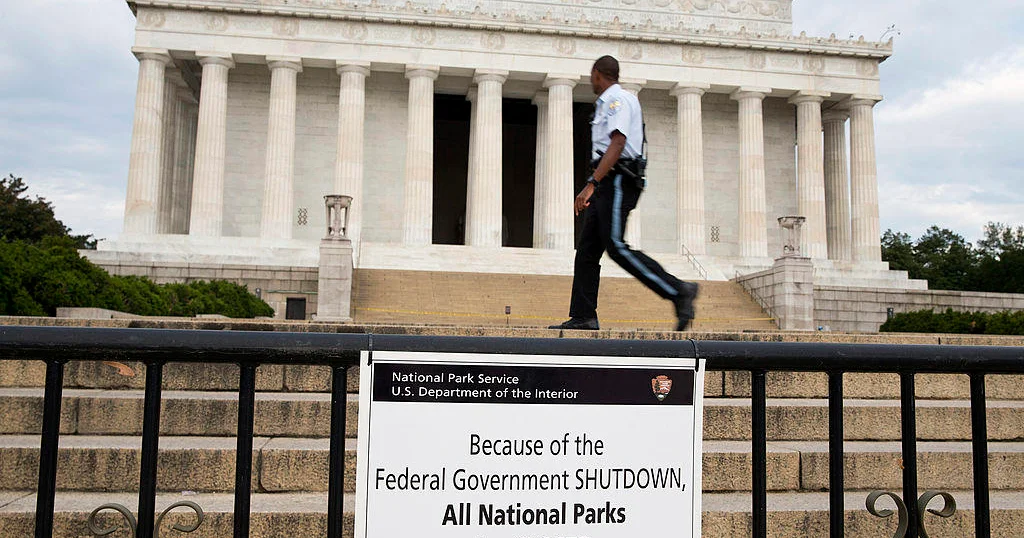The United States government experienced a significant shutdown on October 1, which persisted until late November, marking it as one of the longest shutdowns in history. This event stemmed from repeated failure among lawmakers to reach an agreement on federal funding, particularly emphasizing the divide in discussions over the Affordable Care Act. With repeated stops and starts in governmental funding, the implications of this ongoing uncertainty have raised critical questions about government operations and financial stability.
| Article Subheadings |
|---|
| 1) Historical Context of Government Shutdowns |
| 2) The Fallout of Recent Shutdowns |
| 3) Legislative Maneuvering and Political Ramifications |
| 4) Impact on Federal Employees |
| 5) Future Implications and Solutions |
Historical Context of Government Shutdowns
Government shutdowns in the United States date back several decades. They are formally triggered when Congress fails to pass sufficient appropriation bills or resolutions to fund government operations. The current structure of shutdown rules can be traced back to legal opinions by then-Attorney General Benjamin Civiletti in the early 1980s, establishing that government agencies do not have the authority to operate without approved funding.
Since the 1980s, shutdowns have occurred with increasing frequency, becoming a contentious issue indicative of partisan divisions within Congress. Notably, during President Ronald Reagan‘s administration, there were eight shutdowns, with the longest lasting merely three days. This pattern shifted dramatically in the 1990s and beyond, leading to longer and more complex situations where funding lapses stretched for weeks. The shutdown in late 2018 to early 2019 reached a record 35 days, spotlighting the challenges of reconciling differing political agendas.
The Fallout of Recent Shutdowns
Recent government shutdowns have not only created disruptions in federal operations but also incurring substantial financial losses. For instance, the shutdown from late 2018 into early 2019 cost the U.S. economy an estimated $11 billion, with approximately $3 billion representing permanent losses. These figures underline the significant economic fallout stemming from such political impasses.
Furthermore, as funding gaps lengthen, their cumulative effects take a toll on public services, including national parks, educational services, and even critical public safety operations. Law enforcement agencies, which rely on consistent funding, find themselves in precarious situations during extended shutdowns, compromising their ability to operate effectively.
Legislative Maneuvering and Political Ramifications
The dynamics of government shutdowns often reveal a deeper political struggle. Funding disputes are mainly rooted in ideological differences over budget allocations, with both parties attempting to leverage the funding process to forward their agendas. The negotiations surrounding the Affordable Care Act, for instance, have become a flashpoint for repeated shutdown battles, illustrating how health care policy is deeply intertwined with budgetary disputes.
During the latest government shutdown, the Republican-controlled Senate and Democrat-led House struggled to find common ground on various issues, including immigration policy and healthcare reforms. The inability to confront these critical financial issues has led lawmakers to repeatedly resort to short-term funding measures, exacerbating uncertainty and dysfunction in governance.
Impact on Federal Employees
Federal employees bear the brunt of government shutdowns, often facing furloughs and delayed paychecks during funding gaps. A government shutdown impacts hundreds of thousands of government workers who either face temporary layoffs or must continue to work without pay. This situation not only affects employees but has a cascading effect on family incomes and local economies reliant on government employment.
The emotional and financial strain of shutdowns on federal employees cannot be understated, as many struggle to meet everyday expenses. Advocacy groups and federal employee unions frequently call attention to the harm caused by ongoing uncertainty in employment and financial stability, especially when funding debates lead to extended delays.
Future Implications and Solutions
As government shutdowns become a recurring theme in U.S. politics, lawmakers are confronted with the need for systematic reforms that can help prevent such occurrences. Conversations revolving around potential solutions often center on establishing more robust budgetary frameworks that could secure continuous funding while resolving major ideological disputes.
Implementing a solution might involve creating automatic continuing resolutions or removing partisan amendments that entwine funding with controversial legislative measures, thereby facilitating smoother negotiations and operations. The importance of bipartisan efforts cannot be overstated in navigating these issues to create a more functional and responsive government.
| No. | Key Points |
|---|---|
| 1 | The U.S. government has a history of shutdowns dating back to the 1980s, which have become more frequent in recent decades. |
| 2 | Recent government shutdowns have incurred significant economic losses, including billions in permanent costs. |
| 3 | Funding disputes often reflect deeper political struggles between parties, contributing to extended shutdowns. |
| 4 | Federal employees face considerable strain during shutdowns, including furloughs and delayed payments. |
| 5 | Potential reforms are being considered to prevent future shutdowns, involving budgetary changes and bipartisan cooperation. |
Summary
Overall, the implications of government shutdowns certainly ripple through multiple sectors, impacting not just federal employees but also various aspects of economic stability and public service operations. The continued pattern of funding disputes reflects deep ideological divides and heightens the urgency for legislative reform that could mitigate future disruptions. As the political landscape continues to evolve, finding consensus on budgetary issues will be critical to restoring confidence in government functionality.
Frequently Asked Questions
Question: How often do government shutdowns occur?
Government shutdowns have become increasingly frequent in recent decades, with significant gaps occurring approximately every few years as political divisions intensify.
Question: What are the immediate effects of a government shutdown?
Immediate effects include the furlough of federal employees, disruption of public services, and the closure of national parks and other federal programs.
Question: How can government shutdowns be prevented in the future?
Potential prevention strategies include structural reforms in budget processes, establishing automatic continuing resolutions, and fostering bipartisan negotiations to resolve key issues in government funding.
